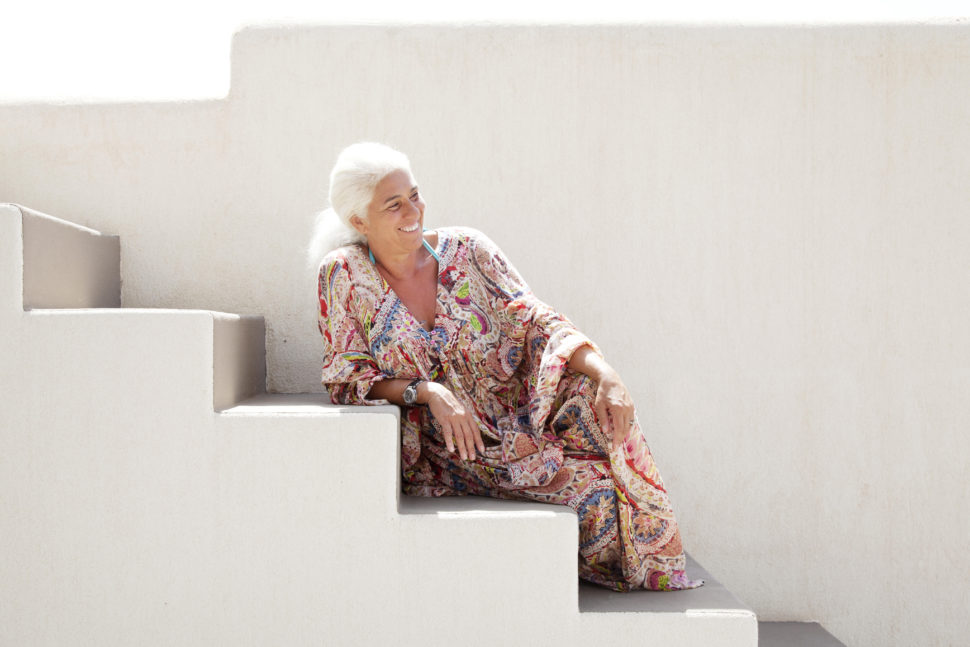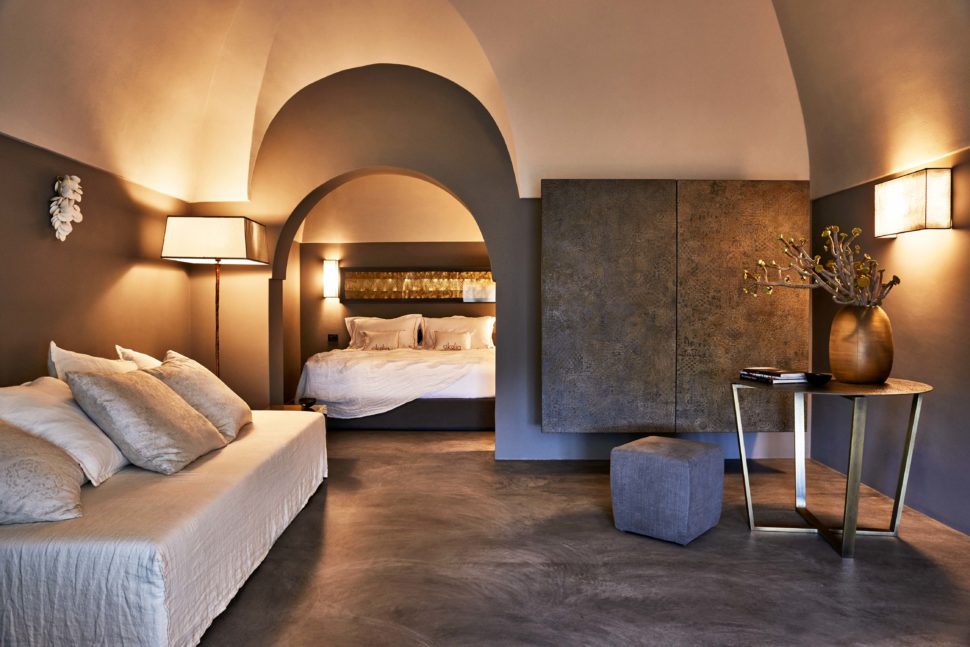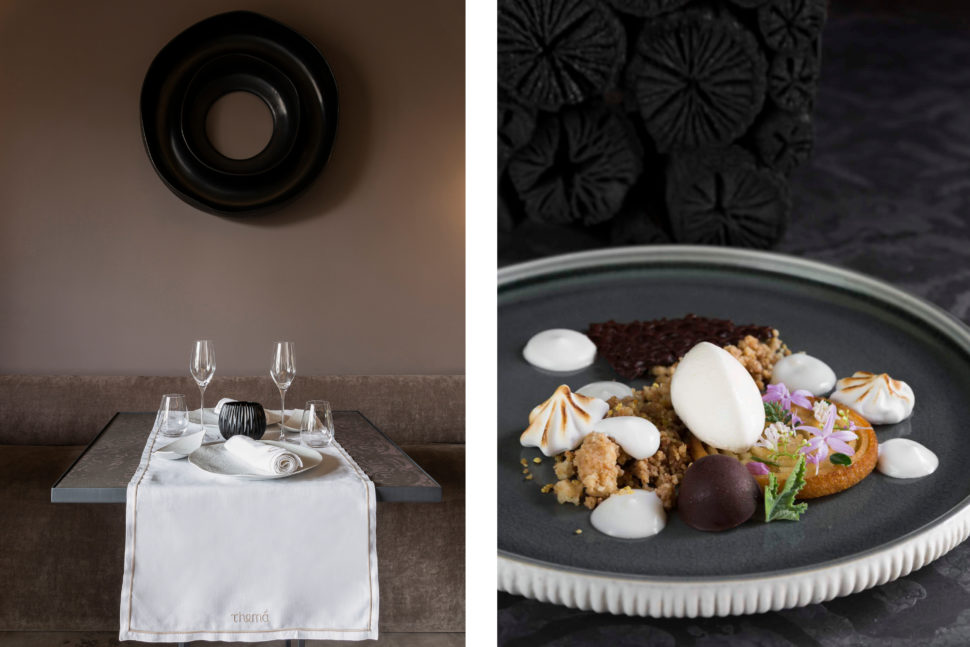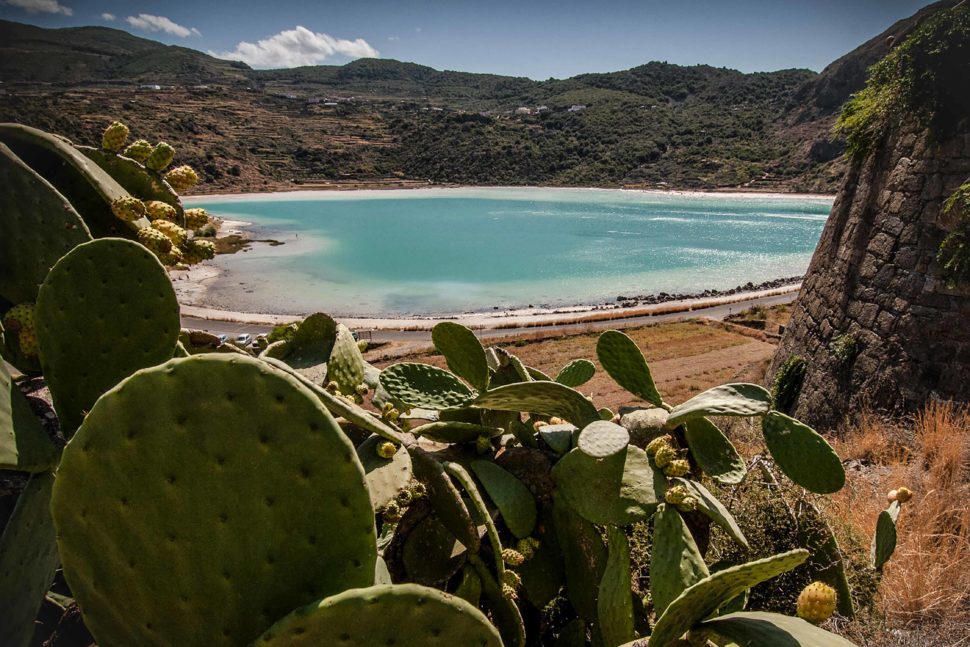We’ll let you in on Italy’s last secret: an island between the shores of Sicily and the tides of Tunis, which according to the owner of new hotel Sikelia, has ‘the stars of Africa, the silence; but the food of Palermo’. Even now, Giulia Pazienza Gelmetti, a former basketball player turned boutique hotelier, has to point out Pantelleria on the map – even to some Italians. But after reading our guide to the best volcanic sites, the Pantescan dish to try before you die, and where to stay up until 3am drinking wine with the locals, you’ll need no further encouragement…

So you started life as a basketball player…
Many years ago – and many kilos ago – I was a professional basketball player. But you can only make money out of it if you’re a man, so instead I worked for a train company and in finance. But my dream was always to own at a hotel, so as soon as I could, I flew around the world looking for one.
How did you become a boutique hotelier?
I lost my parents when I was very young, which in one way, was very unlucky. But in another, it meant I could travel, because my father and mother were wealthy. I’m originally from Pescara on the Adriatic coast, but I was living in Rome and heard someone say that Pantelleria was a place that you either love or hate. I was curious, so I went there in September of the millennium year. As soon as I landed, I thought ‘I love it!’ and came back three weekends in a row. I bought my first property on the island straight after that.
Do you see how people can hate it though?
Not now. I can see how years ago when islanders used to rent out the dammusi (centuries-old agricultural buildings made of volcanic stone), they were very archaic, with old furniture and bad service. People arrived expecting something different. But now, most of the dammusi are converted, so people love it. However, if you’re looking for Porto Cervo in Sardinia, you won’t find it. There’s no Gucci on Pantelleria. It’s not a designer place. It’s a raw island with incredible nature where you can feel the volcanic pull.

What attracted you to Pantelleria?
It’s a hidden gem. Even some Italians don’t know where it is. We are nearer to Tunisia than Italy. We have the stars of Africa, the silence, and you really feel that African mood on the island – but with the taste of Italy, too.
How did you reflect those different cultures in Sikelia?
I wanted to create a hotel that when you close the door, you feel the space, the sunset, the stars and the silence of Pantelleria. Some people find that silence strange and can’t sleep on the first night. But laying down at 7pm, waiting for the sunset, drinking the local passito wine, walking around barefoot, that’s Pantelleria: you can feel the influence of Africa.
The suites are in converted dammusi: can you explain that style of architecture?
Firstly, you have to understand that Pantelleria is an agricultural land facing the sea. It’s not a nautical island. Most of the islanders don’t even know how to swim. The dammuso were originally the buildings of farmers: where they kept livestock and where they lived. Today, because you can’t build anything new on the island that’s not a dammuso, people convert them. They’re in the style of monastic architecture, with thick walls and arched ceilings, but empty and sparse inside. It’s difficult to convert them, because you can’t put a wall in the middle, so all the suites at Sikelia are different in shape, in colour, in fabrics, in metals, but united by the same style.

Your architect, Gabriella Giuntoli, also did Armani’s villa on the island…
When I bought my place in Pantelleria, it was formerly a big villa of a crazy Italian lawyer made up of many, many dammusi. Gabriella helped me to convert it into the hotel that Sikelia is today. I wouldn’t have been able to showcase it the way she did.
Why do you think Pantelleria attracts such celebrities?
Because it’s real. It’s still an unknown place, where people don’t bother you. Madonna came, also Cate Blanchett. When I’m there in winter with friends and important people, you dress how you want, you’re outside in your land during the day and under the stars at night, eating and drinking. You don’t need anything. You don’t need an expensive watch or jewellery. You only need yourself and nature. People who are really rich or have a very stressful life, when they arrive, they settle into a new rhythm. It’s an African rhythm and the tension goes.
Did the film A Bigger Splash change things?
I was on the island at the time when they filmed, but the hotel wasn’t open yet. I also produce wine from my Coste Ghirlanda vineyard and the cast and crew came there every night. Tilda Swinton came to eat and play cards. We’re very close friends with the owner of the Tenuta Borgia estate, where the main filming took place. We’ve hosted weddings there and they send us guests, too. When Armani took over Sikelia twice for events recently, we arranged a dinner at the villa also.

Which Pantescan dish should we try before we die?
Bacio Pantesco (Pantescan kisses), a dessert of fritters stuffed with ricotta cheese and chocolate chips. We also use a lot of capers, because Pantelleria is one of the most important places in the world where capers are grown.
Tell us about your Wine Laboratory pop-up restaurant…
I had the vineyard first and then added the pop-up restaurant. It’s only open July, August and half of September, but my hotel guests can go all year round. There’s also a restaurant at the hotel, of course, so they can choose to eat at Sikelia or at the Wine Laboratory on the vineyard. They’re only eight minutes apart, so we do a pick-up service in the evenings, because people like to drink.
Tell us a secret about Pantelleria…
We have a Sikelia boat that we’ve done up in the hotel style to take guests around the coast, with a sushi chef on board.
Which volcanic sites should we visit?
There are sesi (5,000-year-old megalithic burial sites) made from volcanic stone. Also the Acqua Calda de Nikà (thermal springs) where you can swim in water that is naturally hot, like a bath. There are more thermal springs where Armani has his home in Cala Gadir, too: go in the evening and drink passito. There’s also a natural sauna, the Grotta Di Beniculà, which is a cave heated by fumaroles. Finally, don’t miss Lago di Venere (Lake of Venus). We use some of the lake’s natural materials in our spa, but you can also do it yourself. Put the mud all over your body, walk around to let it dry and afterwards swim in the lake. The French actress Carole Bouquet has a house on Pantelleria and swims there all the time. It’s great for your skin.

Pantelleria’s also known as ‘the Daughter of the Wind’: how do they affect the island?
Everything on the island grows low, because we have to cut the olive trees and the grapevines, so that the wind doesn’t blow them over. You then have to handpick the olives one by one. Pantelleria is the only viticulture in the world that’s Unesco listed, because we do everything traditionally, without machines, by hand, irrigated in the old way. As well affecting our agriculture, the winds also bring a strength to the people. You either get the cooler Mistral winds from the north or the warm Sirocco from the Sahara. When that hot wind blows, you don’t want to do anything, just relax.
How does the island change through the seasons?
Sikelia opens in April and from then through to May, it’s flower time and the island is very green. June, July and September are some of the most beautiful months, because the weather and sea are warm. Whatever time of year, though, the island’s never crowded, even in August. The only difference is the nightlife becomes more widespread: we have jazz every evening in the hotel or the winery. You can eat outside and at Coste Ghirlanda vineyard and stay up until 3am, singing and dancing. During summer, I always go to sleep late. From August to September, it’s the grape harvest, depending on where the farm is. In October, we then harvest the olive trees. If guests want to join, they can get involved. But after one hour, they’ll be tired, because the olives are so low. Luckily, we prepare a big table by the sea afterwards with two types of bread and the fresh oil. It’s a real experience.
For more inspiration, explore our boutique hotels and villas in Italy.

